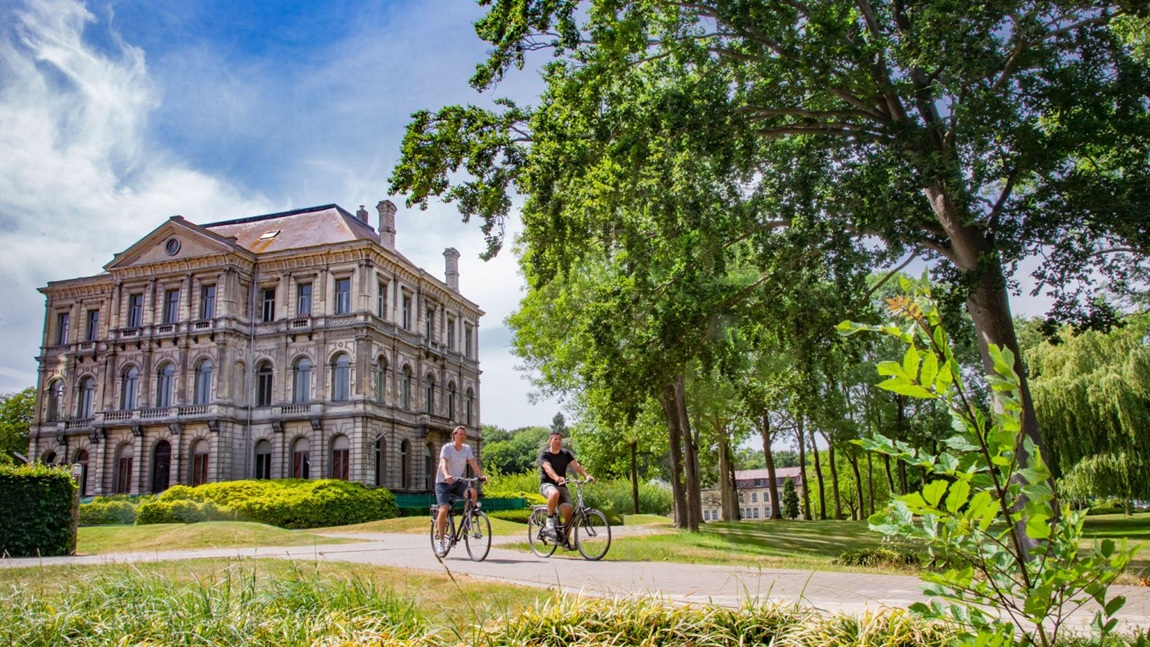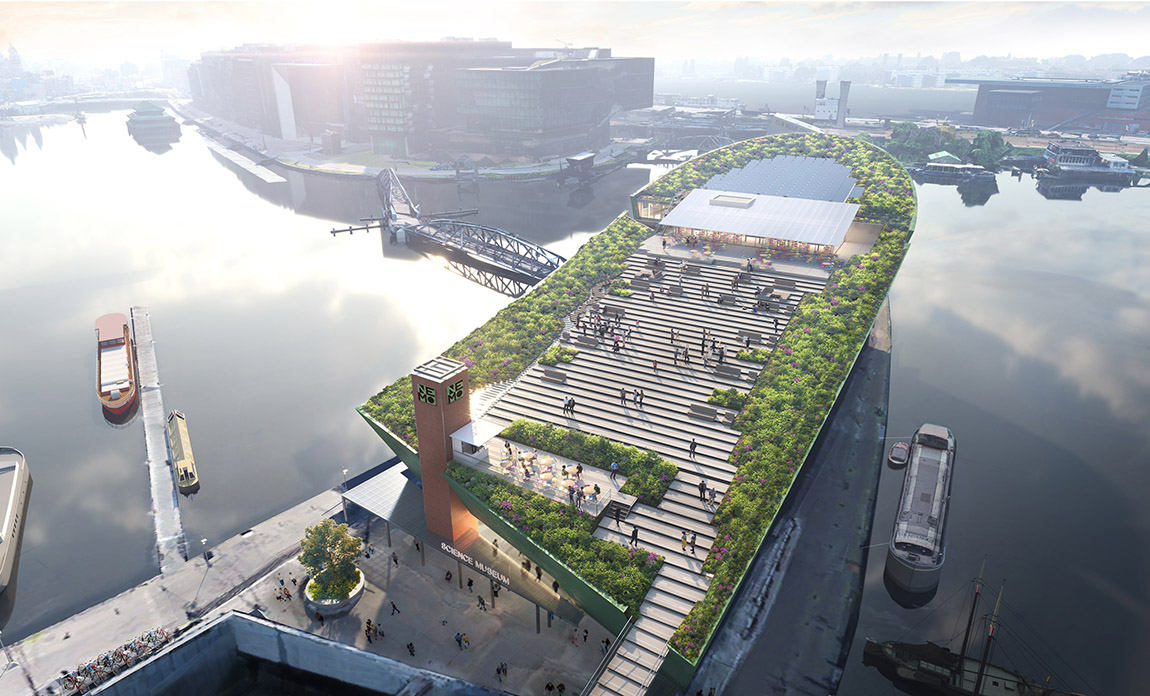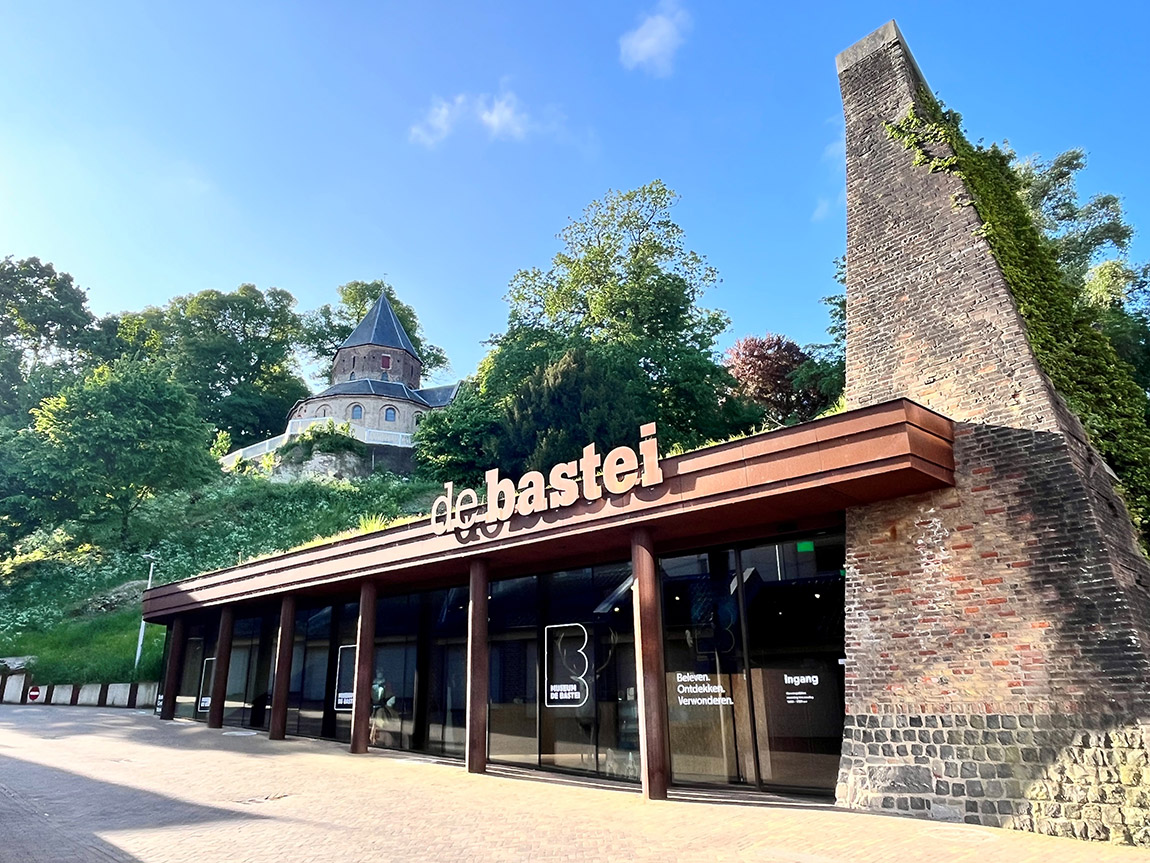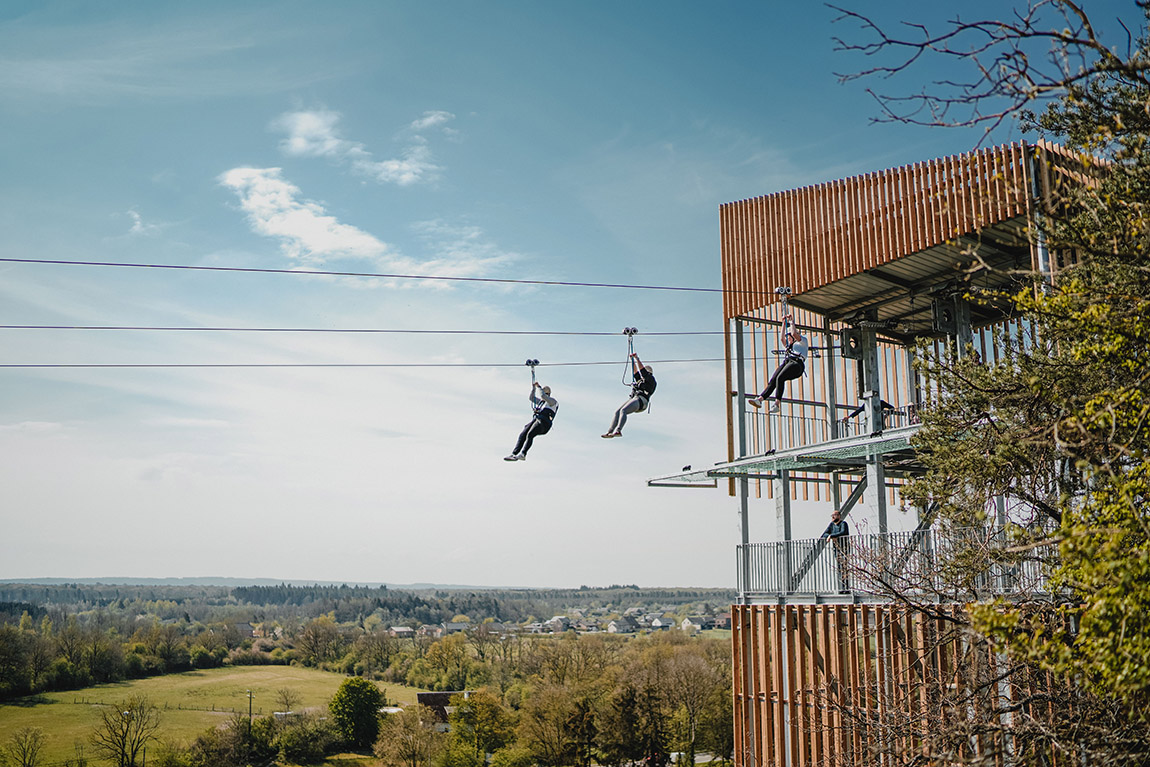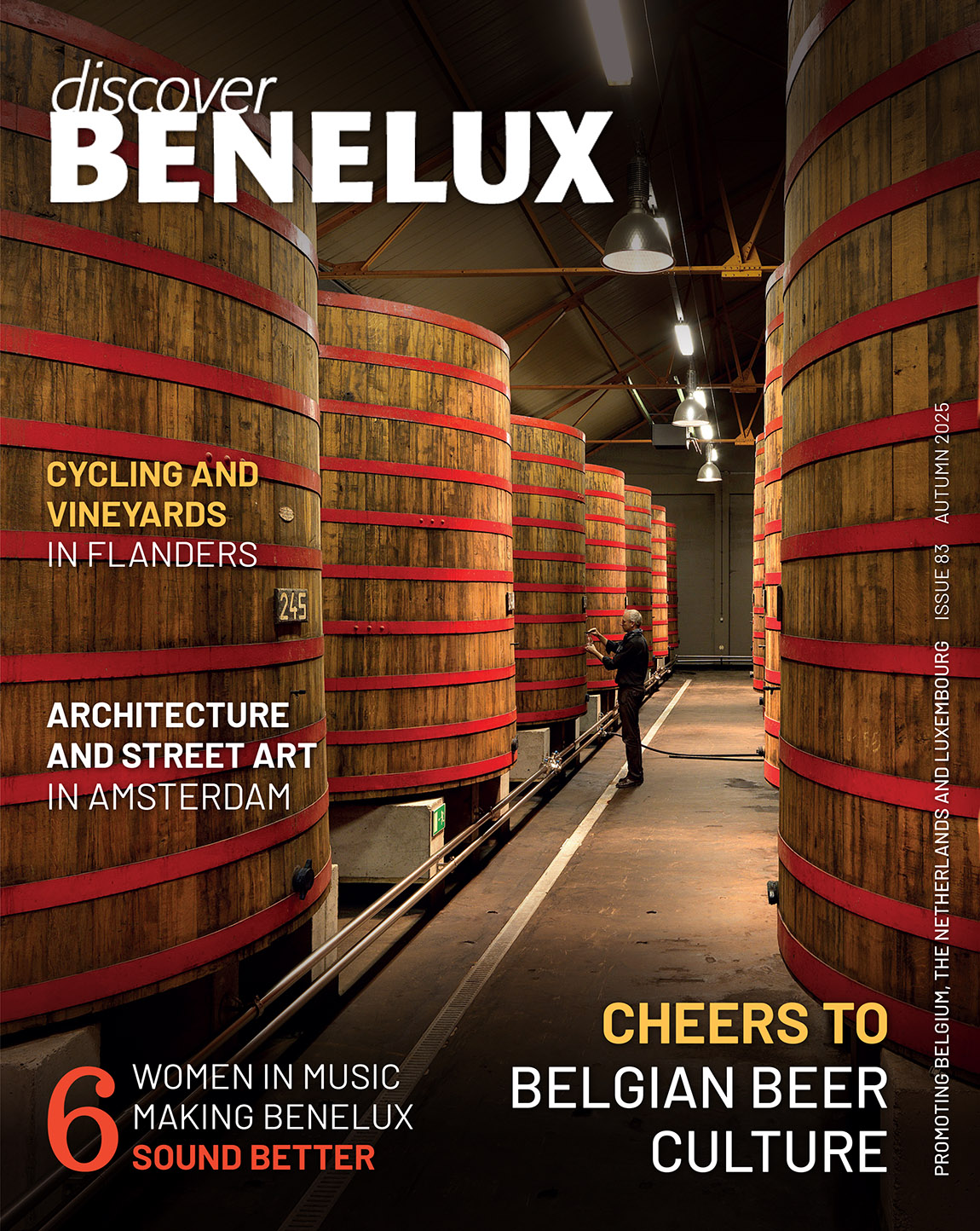Tulip fever in Floralia
TEXT: LISA GERARD-SHARP PHOTOS: CHÂTEAU DE GRAND-BIGARD/FLORALIA
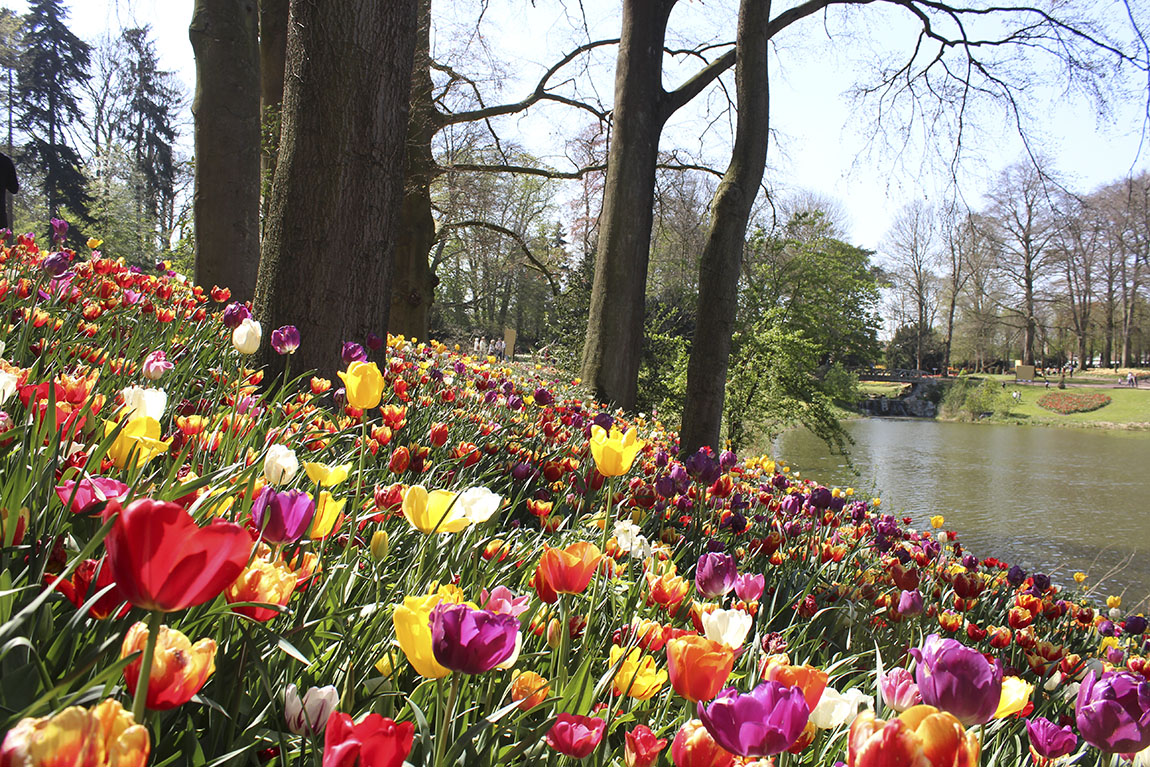
Tulips in all colours of the rainbow. Photo: Château de Grand-Bigard Floralia Brussels
Floralia Brussels is Belgium’s answer to Keukenhof in Holland, the biggest spring flower show in the world. The second-biggest show is equally brilliant, centred on a dreamy, lovingly restored, family-owned castle in Flemish Brabant. The stage for this floral spectacular is the fairytale Château de Grand-Bigard, just north-west of Brussels.
Floralia is a family affair, with the château’s ancestral owners deeply involved in its success. The current owners, Xavier and Nicole Pelgrims de Bigard, live in the Flemish Renaissance castle, so the grounds are only open to the public for this month-long flower show. The 20th edition looks set to be a fabulous affair, with carpets of flowers ushering in spring.
Nowadays, even stately castles have to pay their way, but Grand-Bigard has chosen the path of beauty, not blatant commercialism. The château-owner’s son, an expert in Flemish Old Masters, clearly has an eye for beauty. Cédric Pelgrims de Bigard enthuses over Floralia, this “riot of colours and scents” and confesses to “virtually becoming a spring bulb specialist” along the way. Cédric praises his father, Xavier, for having the foresight and aesthetic sensibility to launch this flower show two decades ago. Mindful of his responsibilities as the 40th ancestral owner of the château, Xavier, the proud proprietor, created Floralia Brussels to help maintain this splendid home for future generations.
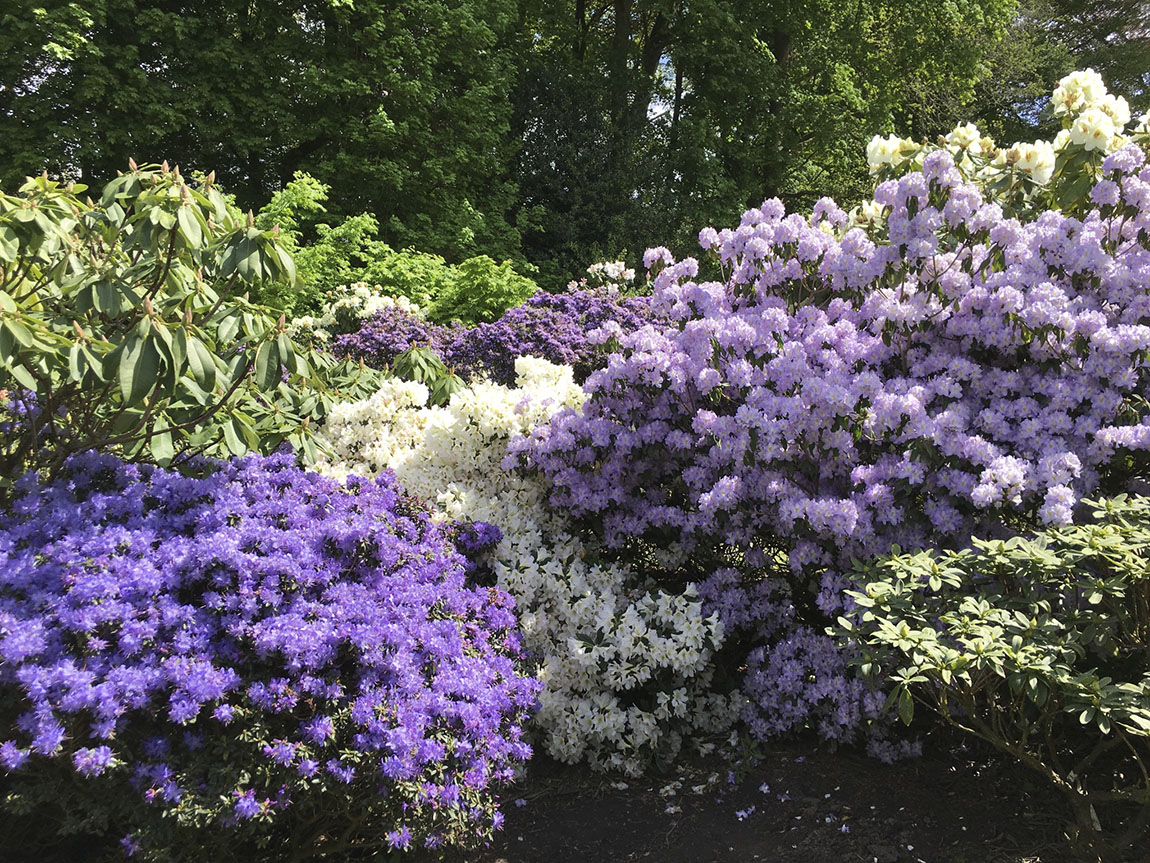
The resident Pelgrims de Bigard family imported their azaleas and rhododendrons from Exbury Gardens, the Rothschild’s world-class English estate. Photo: Château de Grand-Bigard & Floralia Brussels
Tulip Mania on its travels
What also sets Floralia apart is the way it seamlessly taps into Flemish history and international botany. The family are proud that their azaleas and rhododendrons come from Exbury Gardens, the Rothschild’s English New Forest estate, arguably the world’s finest collection. Even so, in this patch of Flemish Brabant, it’s the tulips that have pride of place in spring.
Xavier’s wife, Nicole, points out that it was a Flemish diplomat and botanist who introduced tulips to Europe in the 16th century. Augier Ghislain de Busbecq was posted to the court of Suleiman the Magnificent, where, naturally, the Ottoman Sultan prized tulips above all other flowers. Turkish tulips reached Europe in the 16th century and stunned the newly-wealthy Dutch merchant class with their air of exoticism. Indeed, the tulip got its name from the resemblance of its petals to the intricate folds of fabric in a turban. Rare tulips were traded, collected and displayed, then immortalised in art.
At the height of Tulip Mania, in 1637, one bulb cost over three times Rembrandt’s fees. To speculative Dutch merchants, one glorious flower surpassed Rembrandt’s The Night Watch. For a brief, intoxicating moment, the tulip became the ultimate status symbol, a definition of how much you were worth. The tulip trade is often dubbed the first financial bubble, a frenzied market dependent not on intrinsic value but on resale price inflation. The bubble burst when supply exceeded demand. Fortunately, you can now buy bulbs at Floralia, without paying top guilder, as the Golden Age Dutch merchants once did.
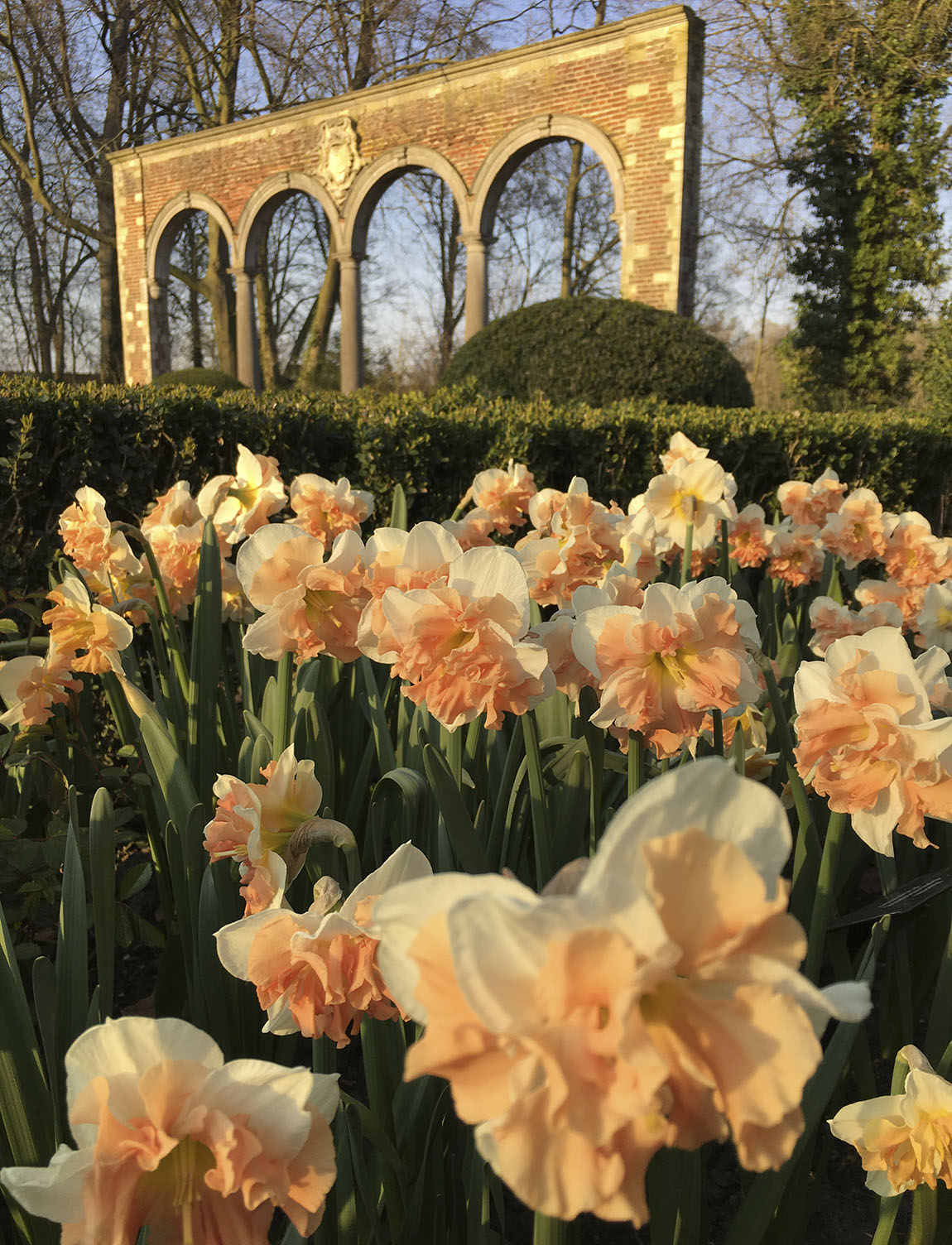
Beautiful blooms. Photo: Château de Grand-Bigard & Floralia Brussels
Cavalcade of history
The château itself has seen a cavalcade of distinguished owners ever since the first lord of Grand Bigard held sway in the 12th century. Big names in Belgian history include Guillaume Rogman, appointed Captain of the City of Brussels by Philip the Good in 1422. His reward for bringing peace to Brussels came in the form of the keys to the city, including to the Brabant Mint. In turn, the castle also belonged to Charles V’s treasurer, the Count of Brabant, the Regent of the Low Countries and to a Knight of the Golden Fleece. Such glories seemed long past when, in 1902, the Pelgrims de Bigard family were faced with a crumbling ruin. Thankfully, Raymond de Bigard then restored the estate, and the rest is history.
The château, which dates back to the 12th century, is the embodiment of Flemish Renaissance style, a blend of russet bricks and creamy stonework. Topped by a slate-tiled roof and a suitably bulbous tower, the architecture seemingly echoes the presence of the bulbs below. The moated château is framed by centuries-old beech trees and classically designed French gardens, a fashion that spread to Belgium from 17th-century Versailles.
The haunting mood is accentuated by a five-arched stone bridge which leads to a romantic gatehouse by way of a drawbridge. Completing the dreamy picture is a medieval keep that surveys Flemish Brabant to the Brussels Atomium – and an ancient chapel that often becomes an interior showcase for yet more floral displays.
Floral festivities
Every edition of Floralia is a revelation, but expect floral designs ranging from exotic birds to symbols of love. A heart-shaped knot of red tulips gives way to woodland paths lined by spring flowers, a vibrant array of crocus, hyacinth and daffodil designed to lift the spirits. A “surprise” Venetian parade of characters in floral carnival costume brings the gardens to life.
Grand-Bigard boasts over a million spring bulbs spread over the 14-hectare park. The team scours the Netherlands to source the loveliest bulb varieties and the most talented producers. Over 400 varieties of tulip are on display, whether pure, solid-coloured gems or with the streaked, flame-like patterns that so enchanted Dutch Golden Age merchants. Xavier, the current chatelain, has also recreated a rainbow-coloured maze of tulips, based on the original 18th-century maze design that only came to light here this century. At heart, Floralia is a powerful reminder that Brussels is Europe’s greenest capital city.
Flower-struck visitors may go home with more than memories. The huge greenhouses showcase constantly changing displays of floral bouquets, designed by talented florists. The estate shop by the gatehouse sells plants and summer-flowering bulbs, including lilies, dahlias and gladioli. Tulip-hunters must respect the seasons: spring bulbs are only on sale in late summer, ready for autumn planting. For now, tulip-lovers will have to make do with feasting their eyes and marvelling about a time when tulips were more precious than paintings. Floralia will take place this year from 1 April to 4 May.
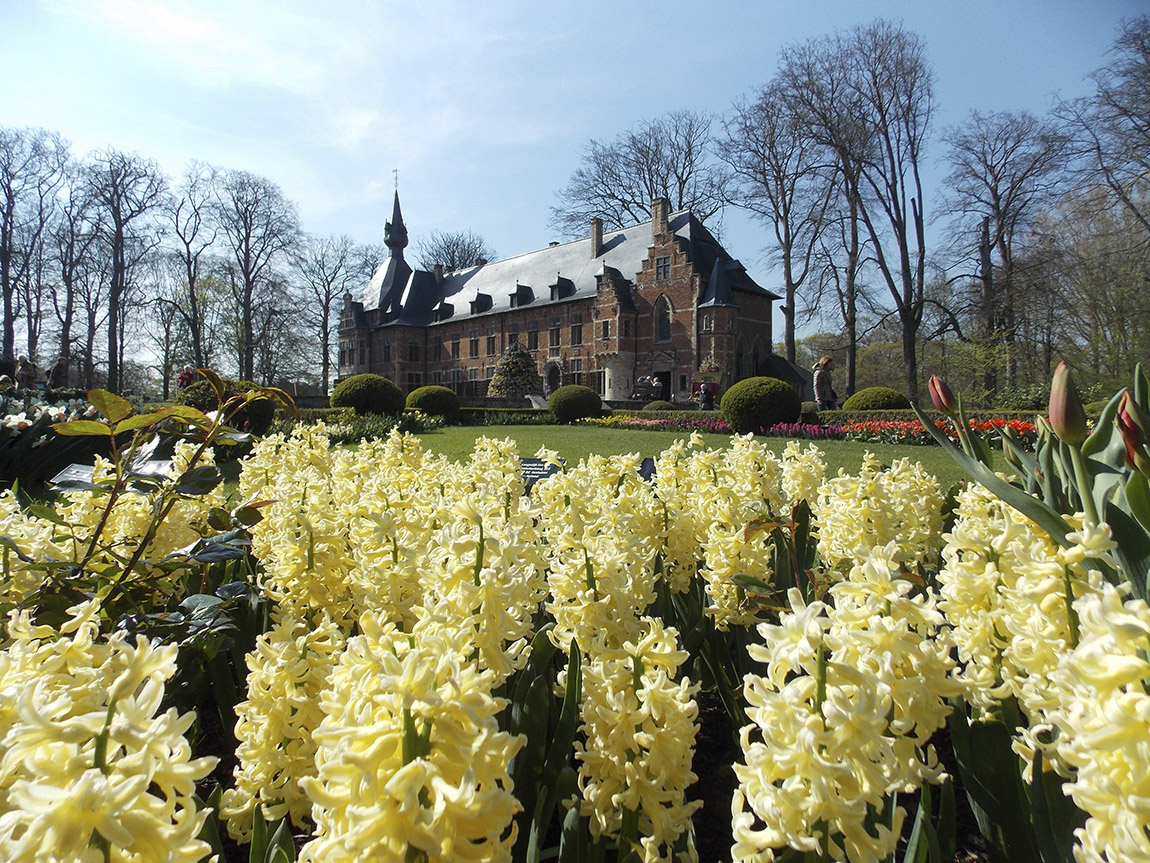
Floralia in all its glory. Photo: Château de Grand-Bigard Floralia Brussels
Subscribe to Our Newsletter
Receive our monthly newsletter by email

